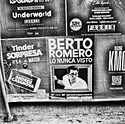My experience is different then yours and I consider myself pretty competent with post tools.
Here are scans from an Epson V500, V7XX and Coolscan of the same frame of 35mm film (Fuji RVP - ISO50) shot using optimal setup with a 4 X 4 arrangement of test charts. The Epson were shot at various resolution settings and I also scanned with and without ICE.
Coolscan full res ->
http://www.fototime.com/02BB797801DCA89/orig.jpg
Epson V500 full res ->
http://www.fototime.com/33269E445D10043/orig.jpg
Epson V7XX full res ->
http://www.fototime.com/11F59FA46FF9497/orig.jpg
When using test targets and shooting under optimal conditions the differences in achievable detail - provided the detail has been captured on the frame of film, is very obvious and cannot be manufactured in post. If you don't use good film, don't take care in taking the shot, don't use good equipment or the target itself doesn't have the detail then the difference may not be so noticeable. Incidentally, no post sharpening were applied to any of these.
My use of these Epsons is not optimized as intended by the OP so I don't know if these could have been improved to equal that of the Coolscan.
I was also curious to compare just how much detail can be resolved by the Coolscan relative to DSLR scanning so I used a Pentax K20D+Autobellows (14.6MP) and Nikon D800+Autobellows (36.3MP) and Coolscan on the same frame of Kodak Techpan shot at ISO25 and processed in Kodak Technidol and got the following results shown below.
- Bottom left shows test target arrangement. Center area bounded in red are shown as 100% crops.
- Above it is 100% crop from Pentax K20D.
- Above that is 100% crop from Coolscan.
- Above that is 100% crop from Nikon D800.
- To the right is an optical magnification (4.5X) that clearly shows real detail not resolved by these methods.
Full res version ->
http://www.fototime.com/8372250EA44CB06/orig.jpg
BTW, you'll notice that even though the D800 has more pixels then a 4000dpi Coolscan file, there is very little difference between the two. Of course there is no dust and scratch removal using DSLRs and the Coolscan+Nikonscan ICE is the most effective tool available.










